Bedroom Feng Shui – 10 tips for creating a zen-like space to encourage sleep
Follow these simple bedroom Feng Shui layout rules to design a room with a harmonious vibe


Every room in the house serves a function, sure, but it's rare we consider the emotional side of a room. Bedrooms should ideally evoke feelings of peace, happiness, pleasure, and a sense of well-being. And there are several ways to do that, especially with bedroom Feng Shui.
Feng Shui principles are rooted in the belief that every element radiates energy. Feng Shui is therefore the art of balancing that energy for the dwellers' well-being, relationships, and sleep quality. According to this art, the bedroom is a 'yin' or quiet space, and its purpose is to recharge the inhabitant's energy while they sleep. It is therefore essential to layout, design, and decorate the space in a way that every element puts us at ease. Who wouldn't want to create a calming, zen-like space that soothes the mind and encourages sleep?
We spoke to the experts who offered their advice and plenty of simple ways you can align your bedroom ideas with Feng Shui.
Feng Shui bedroom tips to encourage calm
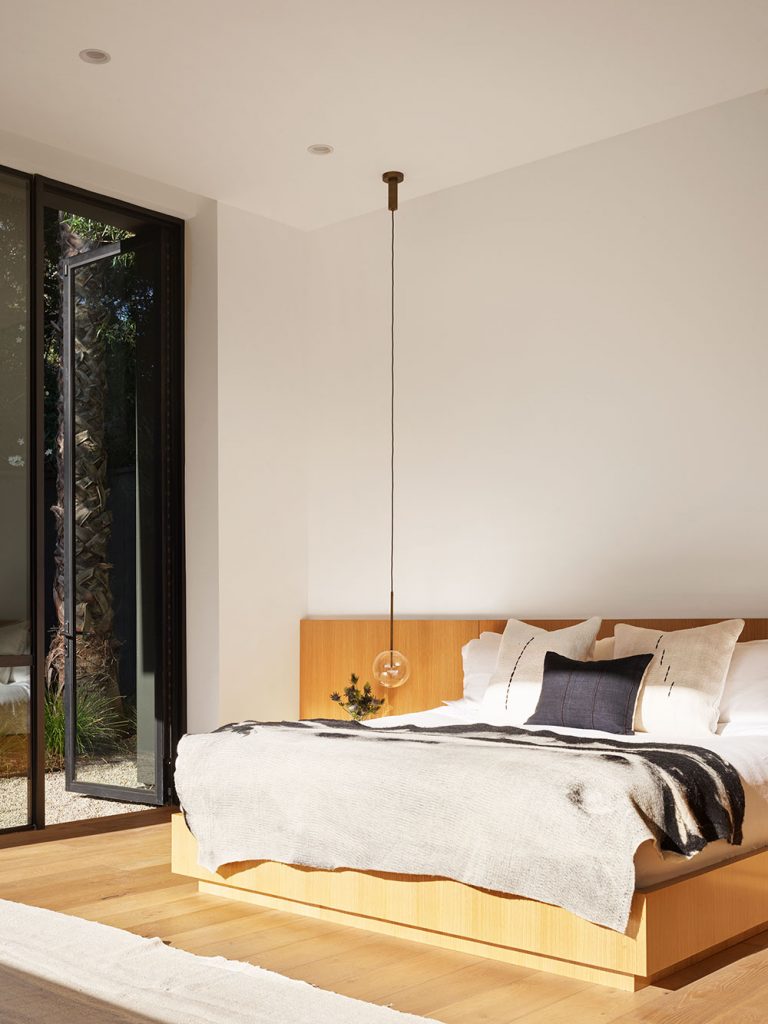
'Feng' means wind, and 'Shui' means water in Chinese. It is a science-based in the natural laws that govern the spatial arrangement or orientation of furniture, decor, or colors in relation to the flow of energy (or Chi as it's often called). When these elements are aligned in the room, it is believed that there is a free flow of positivity in the space.
While we will get into the details of bedroom Feng Shui, some of the essential ones to keep in mind are the avoidance of exposed beams in the room. If anything is broken or cracked, it should be removed from the space. The room should also not be a maze of wires and plugs. All sensible things anyway if you want your bedroom to feel calm and clutter-free.
The room should not have sharp corners, pointy decor pieces; choose rounded furniture instead. Cast iron or metal headboard ideas should be avoided, and anything oversized is not ideal. Natural light and ventilation are essential, and the bedroom should overall have balance and symmetry. All sensible things anyway if you want your bedroom to feel calm and clutter-free right?
1. Declutter your space
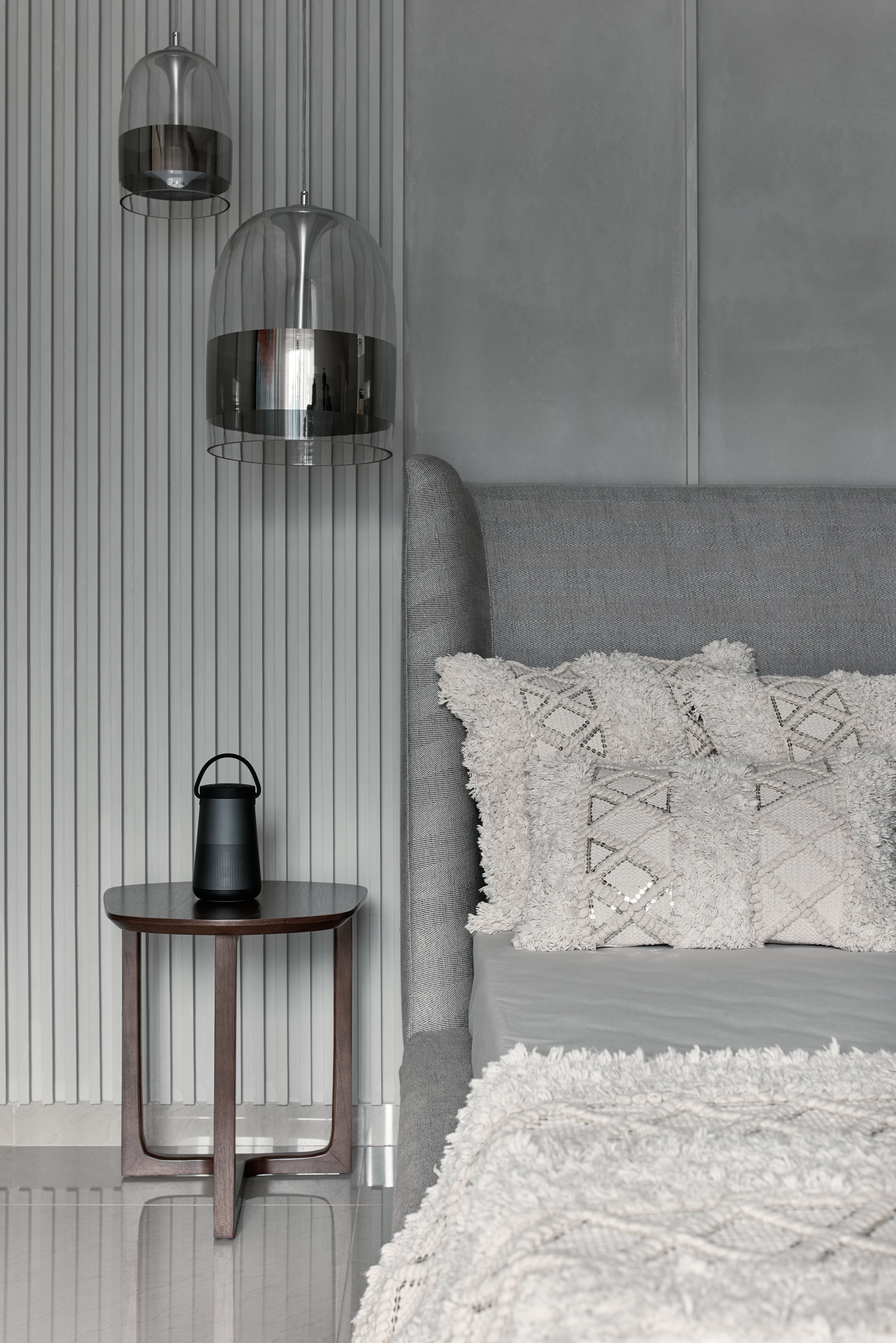
Bedrooms, especially smaller bedrooms can quickly become cluttered. But as per Feng Shui, the bedroom should have as little clutter as possible to improve sleep quality.
While decluttering, think of things that don't fill you with joy and take them out. Take out items that are broken and cannot be fixed, or things that remind you of anything in your past that isn't positive. Another great trick for decluttering is to remove items you haven't used in a year; chances are you won't in the future too. Also, invest in bedroom organizers to keep the rest of the things in place.
'Decluttering the bedroom removes stress, stuck feelings, confusion, and unwanted memories. Every object contains energy and we form mental associations with all of the things we have. Even if the bedroom closet is cluttered and the door is closed, or the dresser drawers are in chaos and they are shut, that energy is still looming in our bedroom.' says Dana Claudat, Feng Shui Master, The Tao of Dana.
'The best way to experience this is to notice how you feel in your bedroom, and even notice if there's a difference in how well you sleep after you've decluttered and organized a bit more.'
2. Position the bed carefully
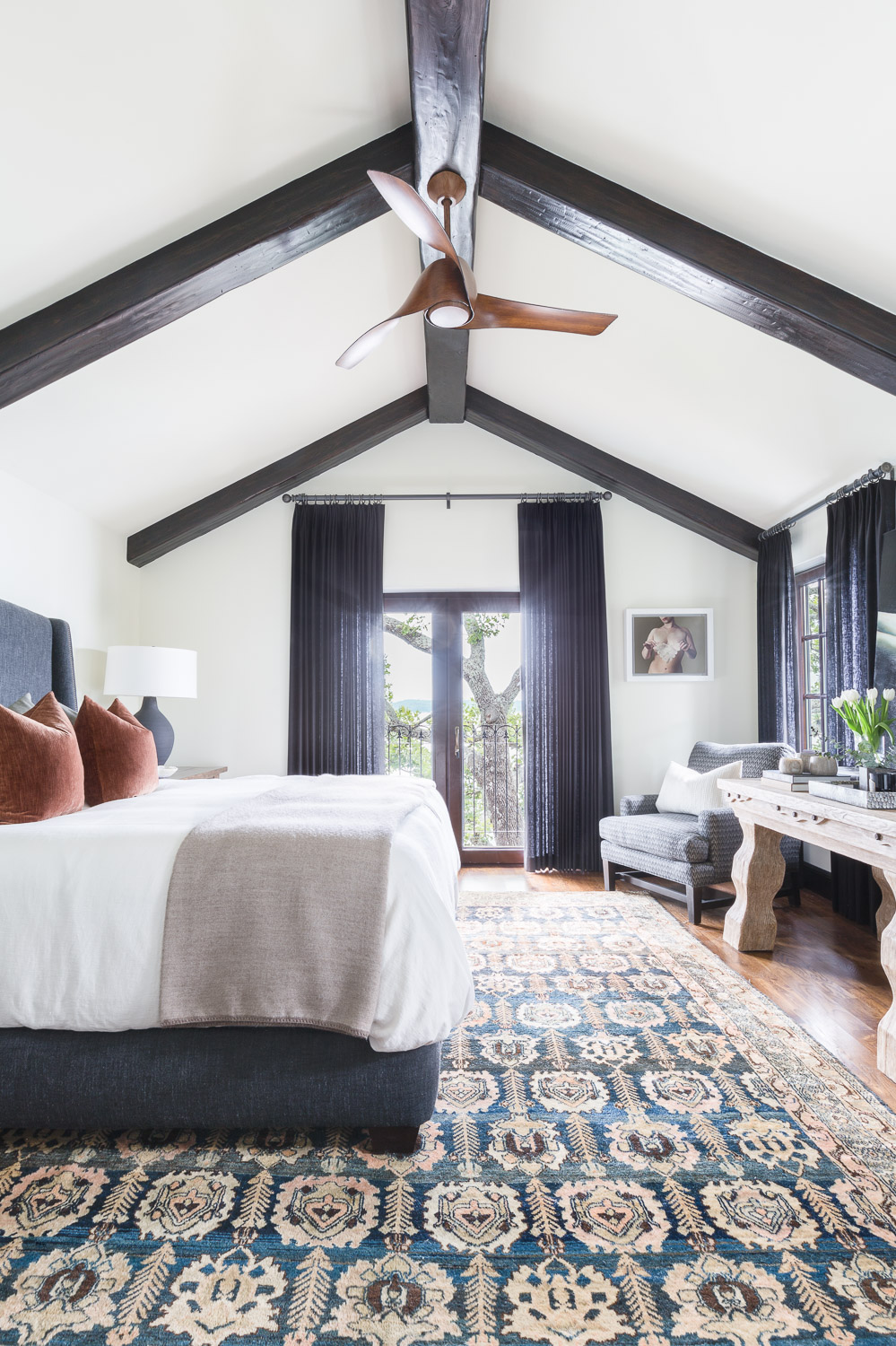
You need to keep yourself in a commanding position in the bedroom – this, in turn, relates to you being in a commanding position in life. To apply this principle in your bedroom layout, choose the location of your bed carefully. An ideal bedroom Feng Shui layout dictates that the bed should be positioned such that you can see the door, but it shouldn't be directly in line with it. If your room is too small for this, then place a mirror so you can see the door reflected in it.
'The bed should not be in the path of the bedroom door; it should also not be in line with the toilet door either. If there is enough space, you can keep a screen – removable or fixed – to segregate the bed from the toilet.' explains Henry Fong, Feng Shui consultant, at Absolutely Feng Shui.
'In some apartments that I have consulted on, the room was so small that it was impossible to position the bed out of the path of the toilet door. Neither could we relocate the toilet door. In such cases, the only option left is to keep the toilet closed at all times.'
3. Keep the bed head away from beams
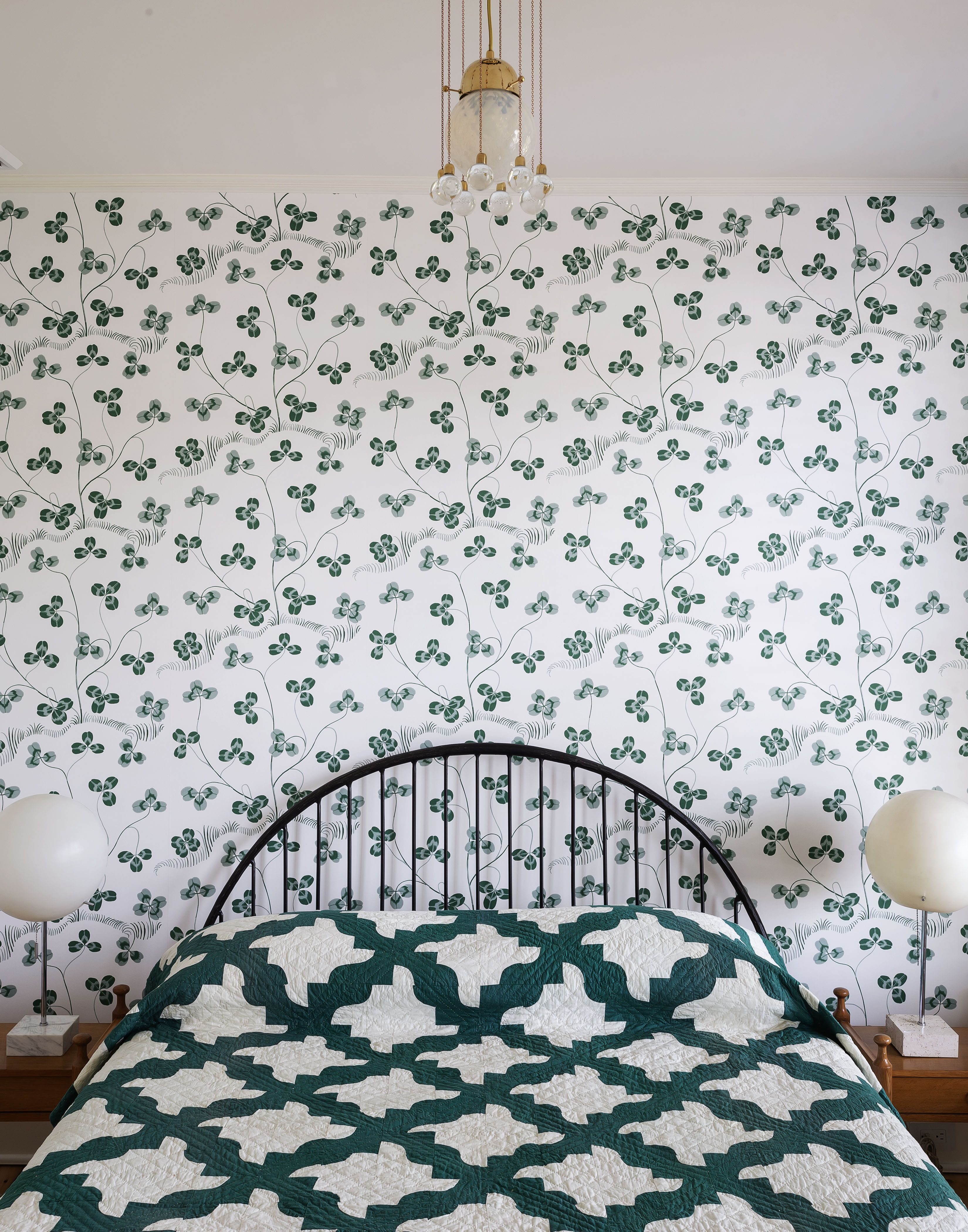
'The headboard should not be placed in the middle of a room or against a window.' advises Henry. 'If you have no choice but to place the bed head against a window, make sure the window is closed and curtains are drawn when you go to bed. It should also not be placed directly under an overhead beam; in such cases move the bed to another location. If you are not able to position the bed away from the beam, consider installing a false ceiling to diffuse the ‘sha’ generated by the beam. The bedhead should not share a common wall with the toilet or bathroom for obvious reasons,'
In Feng Shui, a headboard represents support. It is therefore ideal to have a solid headboard that is installed against the wall, for harmony and stability. For statement headboard ideas, think tufted, leather, wooden, or velvet designs.
4. Opt for a neutral color scheme
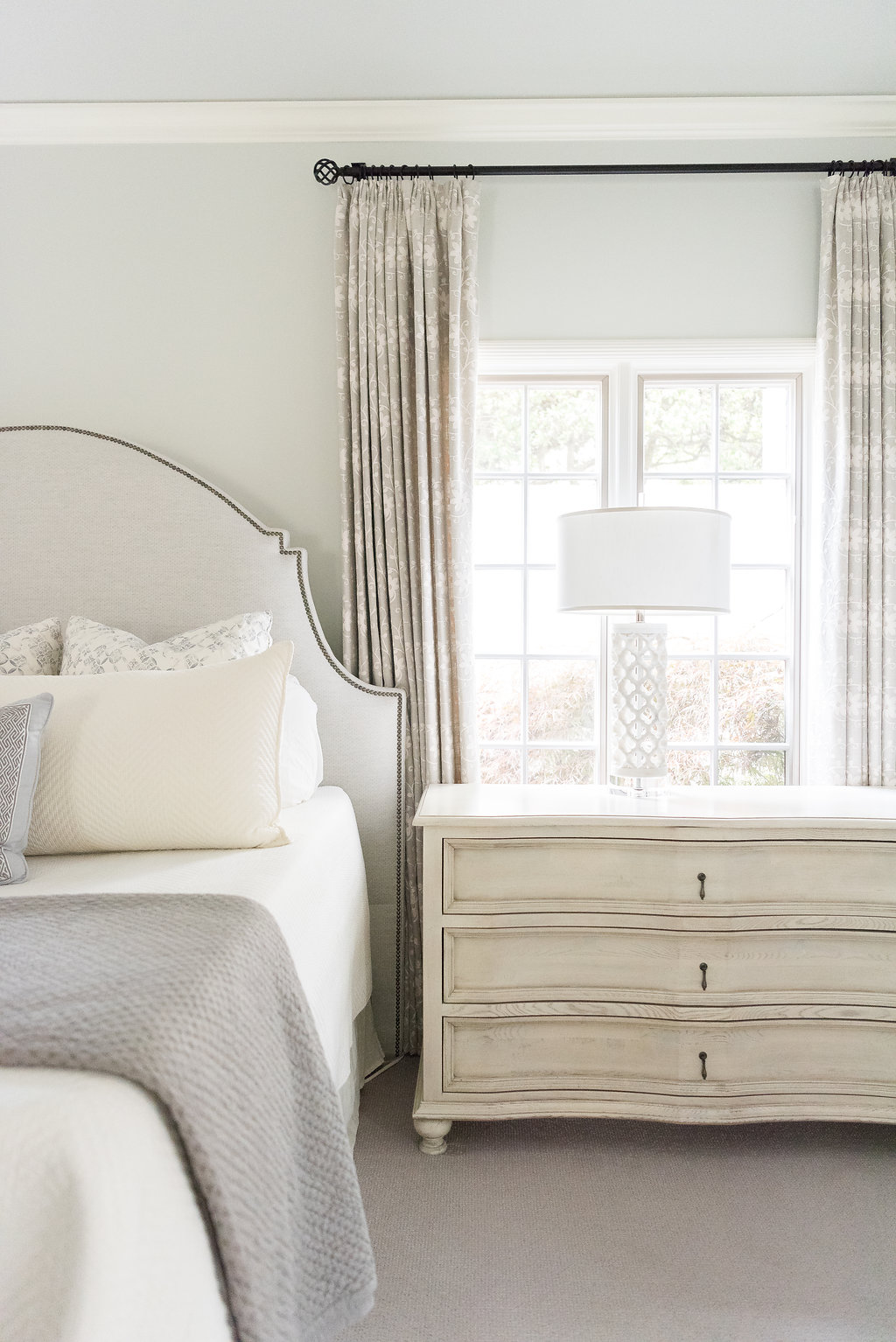
Filling your bedroom with myriad hues may be tempting but as per bedroom Feng Shui colors, neutrals work best as they do not overstimulate the energy of the room and help you sleep well. Think of beiges, creams, and earth tones of brown or taupe. A little sprinkling of accent hues is of course, permissible, all through artworks, candles, or bedsheets.
'Colors like pastels are recommended for bedrooms as you want good sleep. Red or bright pink are too disruptive or energetic for sound sleep, and black is too dark, as you cannot see anything when the light is switched off,' says Michael Oon, a Feng Shui consultant.
While opting for neutral bedroom ideas, also consider layering the room with feel-good textiles, scented candles, or maybe even a white noise machine for a soothing interior.
5. Say no to electronics in the bedroom
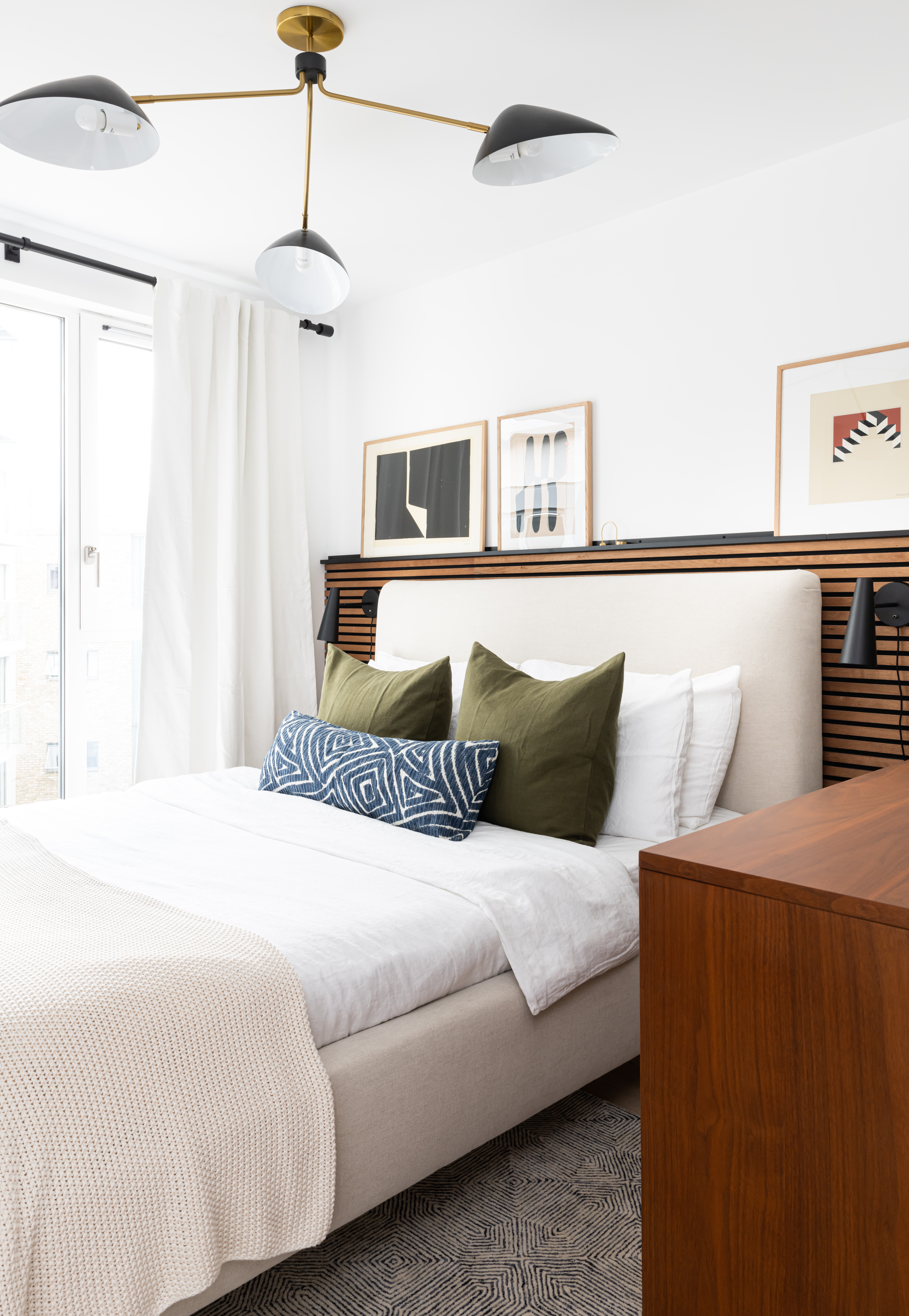
'I love to create a space free of electronic devices whenever possible to detach from all of the EMF waves and have the most restorative sleep. When work and electronics are out of the bedroom, you can fully unplug from the world.' says Dana.
'I have some clients who feel they must watch TV while lying in bed, and if it's essential, try to turn off the TV completely before bed. When we're asleep, we are mentally impressionable. So, it's a great practice to keep the TV off while sleeping to avoid taking in all that streaming TV information. Allow your mind and body to fully revitalize when in bed.'
The rule also applies to work-related gadgetry, such as laptops, kindles, etc. The principles of Feng Shui disallow one to create a workspace inside the bedroom as that hampers the quality of sleep.
If you want to go a step further, consider tuning into sleep apps that come expert-approved to give you a better night's sleep.
6. Place the mirror carefully
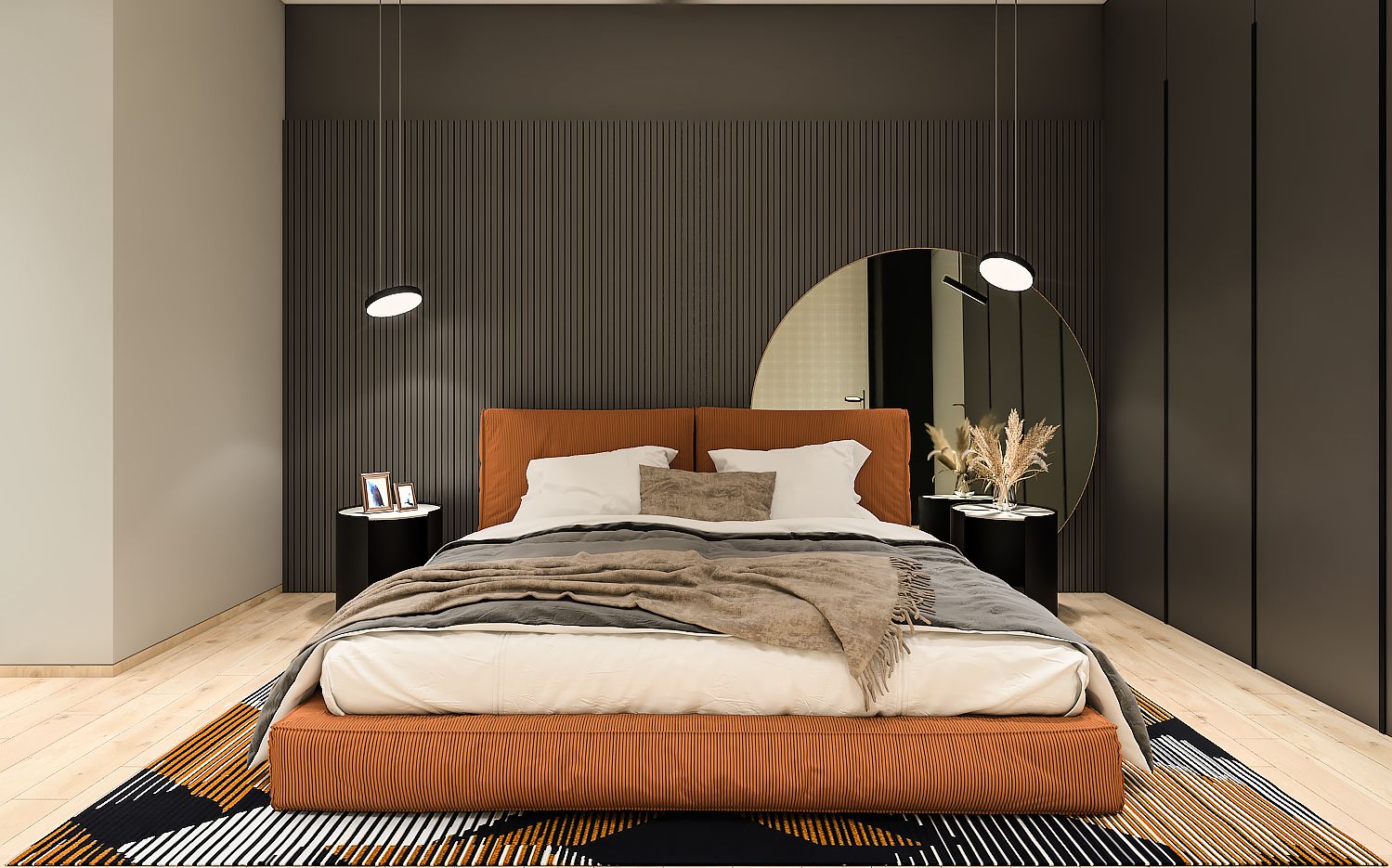
A mirror is a necessity in a modern bedroom but its placement can be difficult when implementing bedroom Feng Shui. 'The mirror is very useful for make-up and checking your appearance. However, mirrors reflecting the body can disrupt sleep,' says Michael.
The mirror should not be in line with the bed; a complete no-go for a high-chi bedroom. A good idea would be to hang it behind the bed. In fact, an interesting bedroom lighting idea is to place the mirror opposite a window, to maximize sunlight into the room.
7. Hang pleasing images on walls
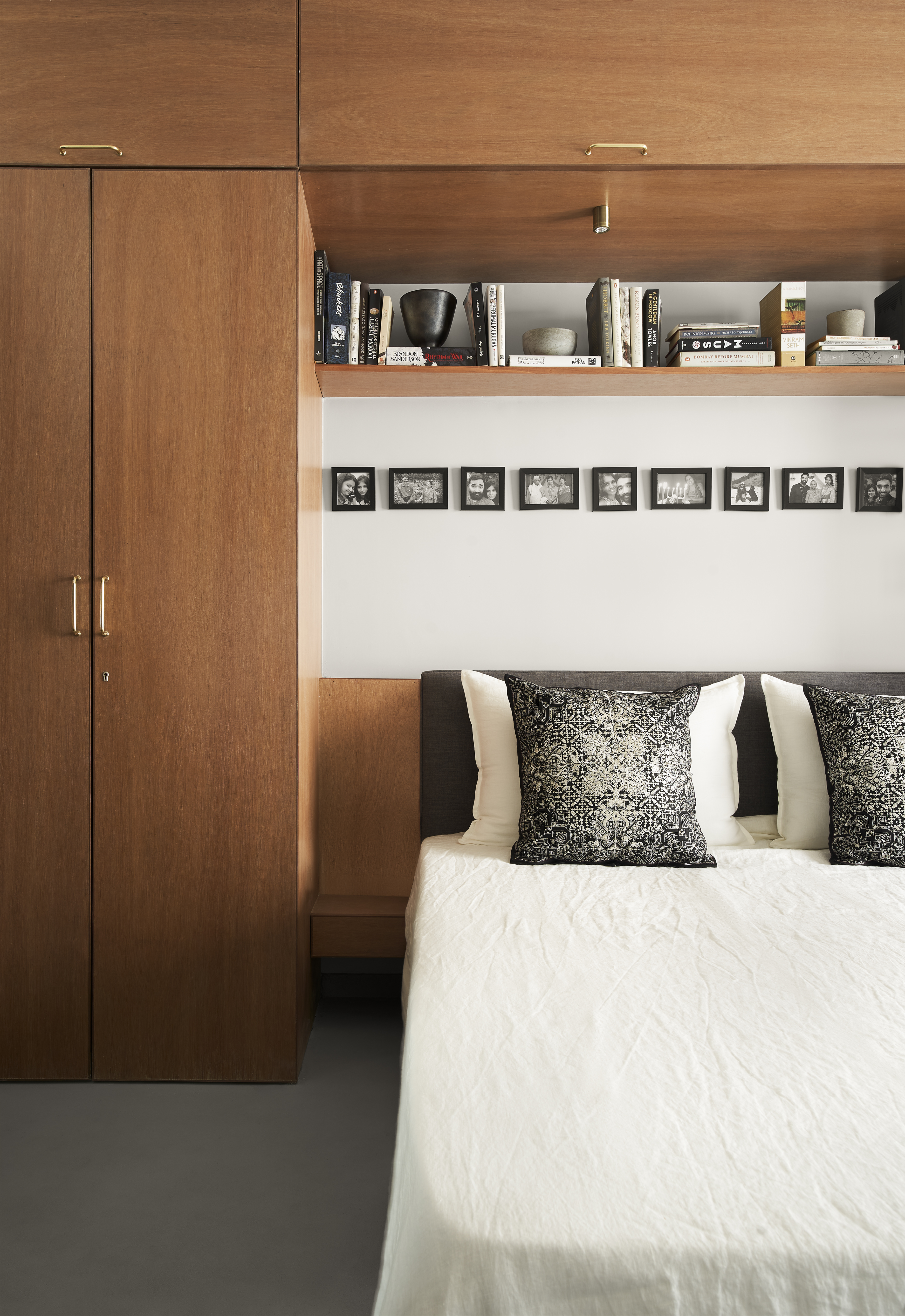
Hanging art in your home can be tricky; it takes a lot of consideration. In the bedroom, especially in a couple's bedroom, choose art or pictures that encourage happiness. Pairings of two work very well in Feng Shui so consider hanging a painting that reflects this in the print.
Feng shui masters do not recommend using water elements in the bedroom, even if it's in the form of art. If the painting does reflect water, it should be still water and not depict of waves or a waterfall. Think calm.
'Choose images that are uplifting (happy or cheerful) or of the love of your life, your ambition, or your family,' adds Michael.
8. Opt for thick drapery
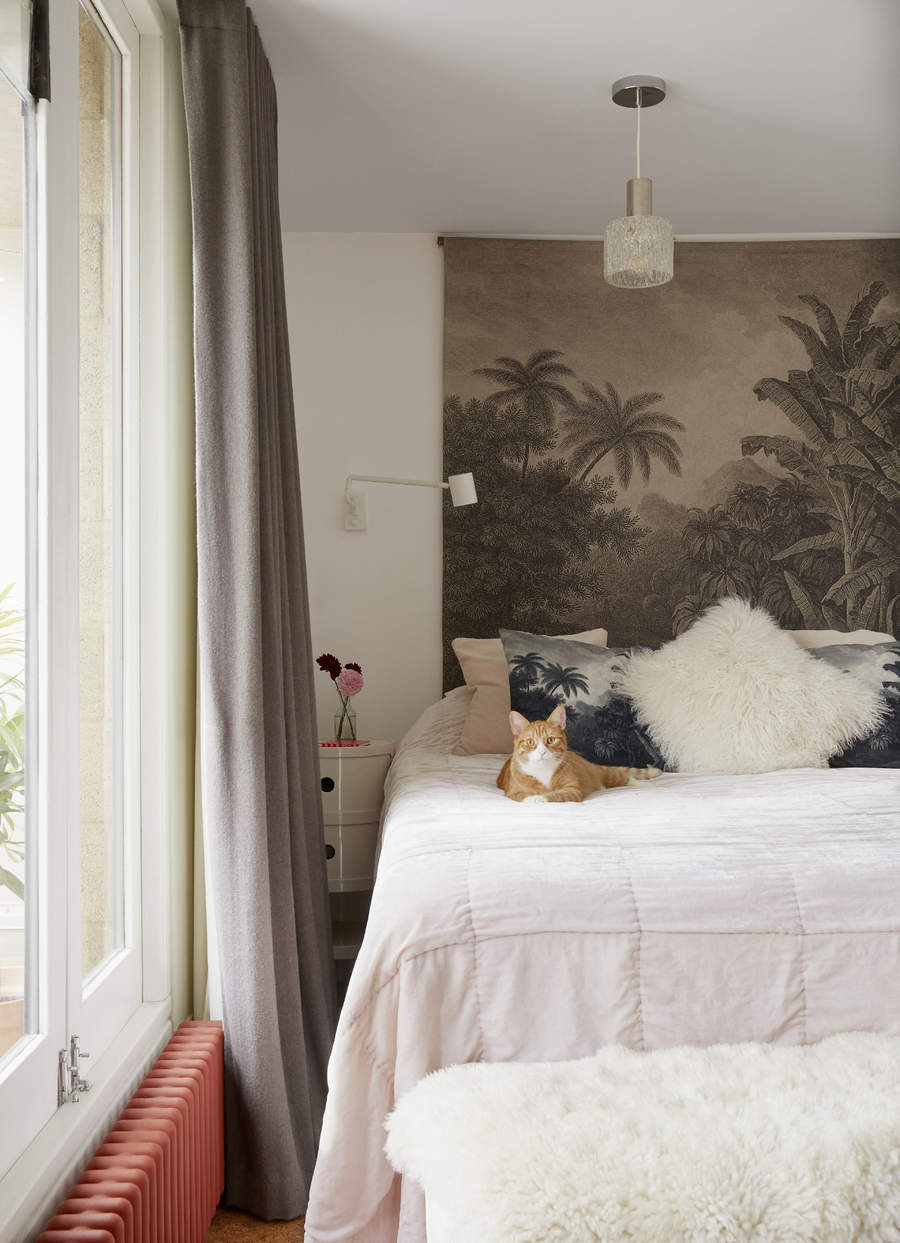
'Blackout curtains that can also be opened easily in the morning to stream in sunlight are one of the top ways to ensure that a bedroom is a sanctuary for deep sleep.' says Dana.
'I like to find more neutral, lighter-toned curtains when using blackout fabrics, as they maintain the softness of the room without adding a weighty feeling to the windows during the day. Opening these curtains in the morning is equally important as blocking out the light during sleep. The sunlight sets your circadian rhythms, boosts your mood, and has a cleansing effect on the space.'
Another great bedroom curtain idea is to choose roman blinds that can be pulled up and down, with ease. These can create a completely dark interior, and ensure filtered light in the evening with mid-open. During the day, make sure you pull up the drapes entirely even if you aren't home, as the natural light will help energize the stale energy of the room.
9. Ensure the room is free of heavy furniture
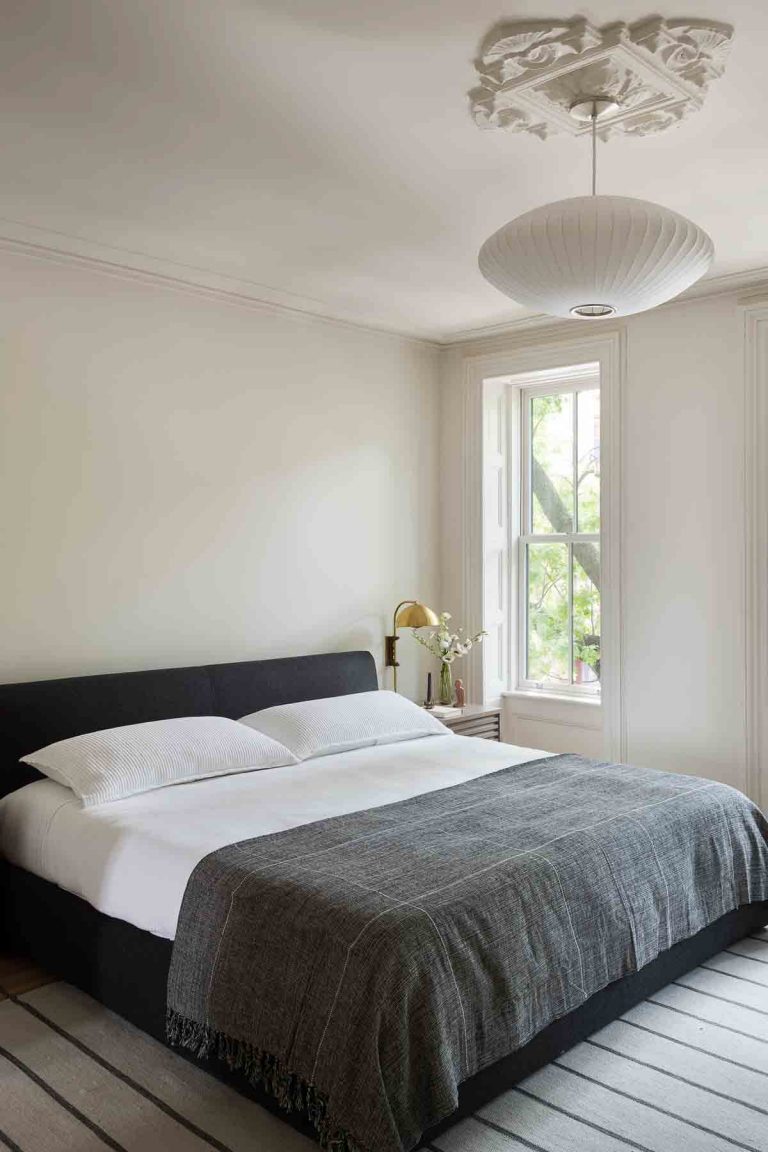
It is believed that tall, looming, or heavy pieces gives off constrictive energy in the bedroom, which is why bulky furniture like bookshelves or gym equipment should be kept out of the room. Opt for sleek, modern bedroom furniture that takes up little space and offers functionality.
'The focus of the bedroom is the bed and the ability to have a good night’s sleep. The bedroom should not be too energetic. It is a place of calm and rest. Therefore, avoid having gym equipment like weights and bench press, etc,' says Michael.
10. Symmetry is important
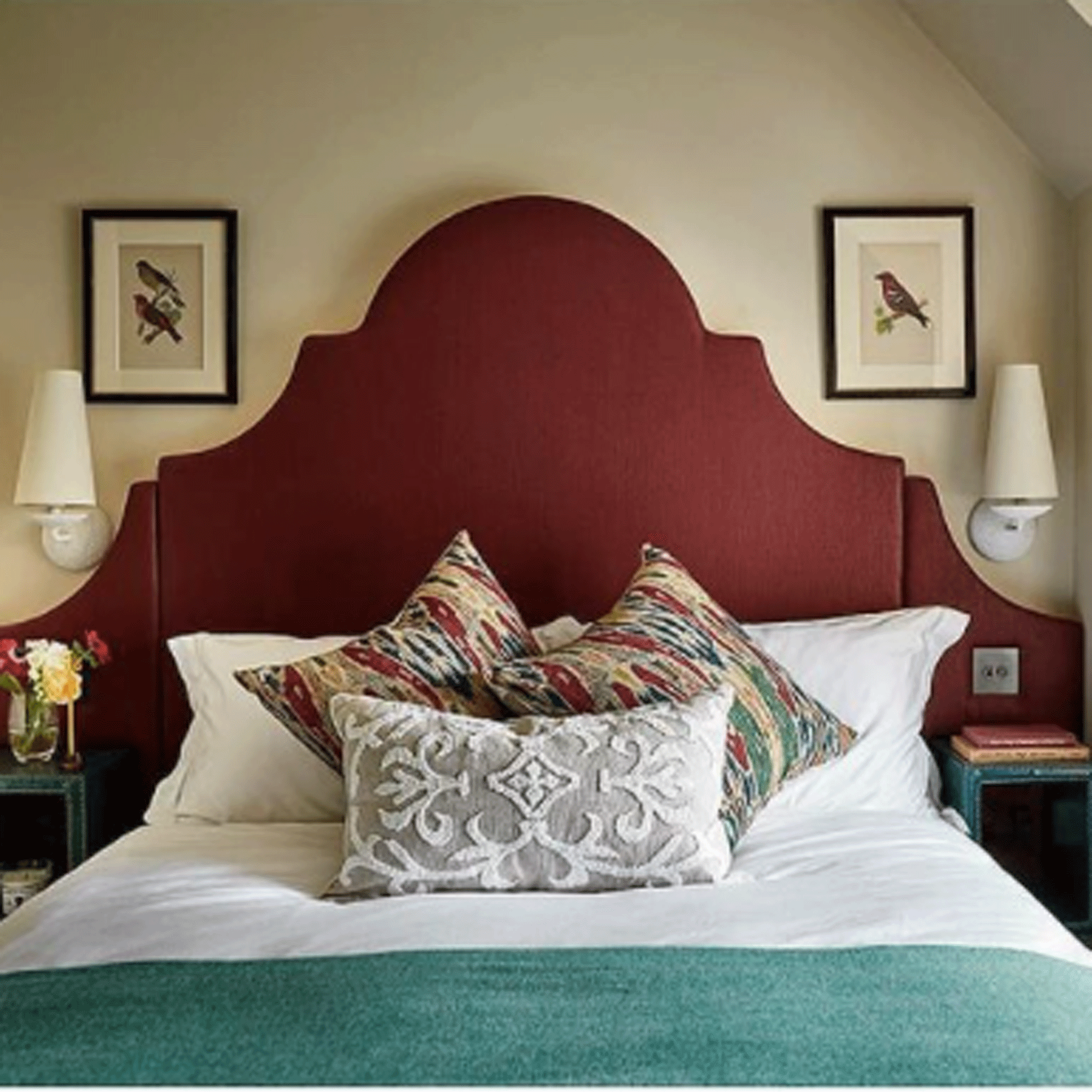
This does not relate to a matchy-matchy decor, but elements in the bedroom must be close in size. Consider adding bedside tables on both sides of the bed, or as seen in this image, similar-sized artworks on the wall. This will help bring balance in the interior and ground the overall scheme.
What is the best direction for your bed to face?
As per Feng Shui, the direction of the bed is of paramount importance to get optimum sleep. Ideally, the bed should not be in line with the door as when you're asleep, you are most vulnerable, and so, should be out of the way of any intruders. Also, don't place the bed in such a way that the door opens right into it and you're able to see the doorway at all times when you're in bed; this can be distracting. The bed should be diagonal across from the entrance, so you can always see who is entering and exiting the room.
Chi enters and leaves a room through the windows and doors, so it's best to stay out of this zone. Place the bed against a solid wall to give the bedhead strong, sturdy support.
Ensure the bed is not directly under beams, or a toilet on the floor above as both hamper the flow of energy. Don't face the bathroom door while sleeping – if you don't have a choice, keep the bathroom door closed at all times.
How do I Feng Shui my bedroom for good luck?
For a happy, prosperous life, bring in elements of Feng Shui and keep the energy flowing in your space. Declutter your bedroom, and keep the indoors always neat and clean. Move all heavy furniture such as tall bookshelves, storage boxes, etc out of the room. Opt for a neutral color scheme, and bring in pops of colors through drapery or accessories. Display positive artworks that generate a feeling of happiness and well-being. Avoid images of flowing water.
Choose organic linen and textures that remind you of the outdoors. Pull up the curtains to bring in plenty of sunshine. Limit electronic devices such as laptops and TVs in the bedroom as these hamper your sleep; also keep the home gym out of the bedroom. Try to create symmetry in the decor and bring in similar-sized pieces. Finally, make sure you clear your bedroom regularly. Use essential oil diffusers with sweet orange oil to uplift for the best Feng Shui.
Be The First To Know
The Livingetc newsletters are your inside source for what’s shaping interiors now - and what’s next. Discover trend forecasts, smart style ideas, and curated shopping inspiration that brings design to life. Subscribe today and stay ahead of the curve.

Aditi Sharma Maheshwari started her career at The Address (The Times of India), a tabloid on interiors and art. She wrote profiles of Indian artists, designers, and architects, and covered inspiring houses and commercial properties. After four years, she moved to ELLE DECOR as a senior features writer, where she contributed to the magazine and website, and also worked alongside the events team on India Design ID — the brand’s 10-day, annual design show. She wrote across topics: from designer interviews, and house tours, to new product launches, shopping pages, and reviews. After three years, she was hired as the senior editor at Houzz. The website content focused on practical advice on decorating the home and making design feel more approachable. She created fresh series on budget buys, design hacks, and DIYs, all backed with expert advice. Equipped with sizable knowledge of the industry and with a good network, she moved to Architectural Digest (Conde Nast) as the digital editor. The publication's focus was on high-end design, and her content highlighted A-listers, starchitects, and high-concept products, all customized for an audience that loves and invests in luxury. After a two-year stint, she moved to the UK and was hired at Livingetc as a design editor. She now freelances for a variety of interiors publications.
-
 Italian Kitchen Trends — 5 Emerging Ideas From the Chicest Italian Designers That I Predict Will Go Global in 2025
Italian Kitchen Trends — 5 Emerging Ideas From the Chicest Italian Designers That I Predict Will Go Global in 2025Fresh from Milan Design Week, these are the exciting finishes, styles, and innovative materials I can't wait to see in more kitchens this year
By Faiza Saqib Published
-
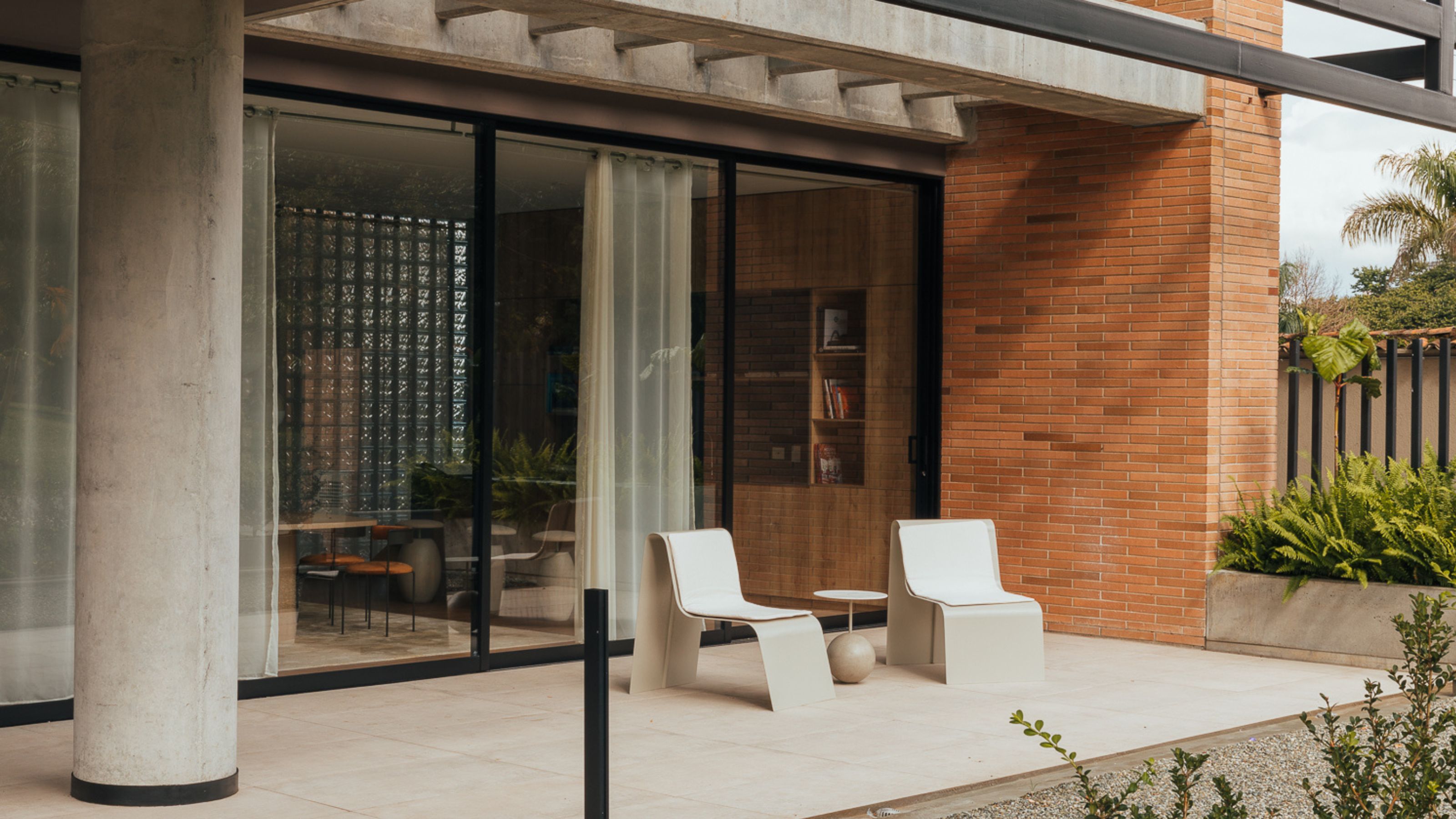 Small Patio Ideas — 8 Clever Ways to Style Up Even the Tiniest of Outdoor Spaces
Small Patio Ideas — 8 Clever Ways to Style Up Even the Tiniest of Outdoor SpacesIf you're dreaming of turning your small patio into a dream space the right combination of practical and creative ideas will help you max up its potential
By Sarah Wilson Published